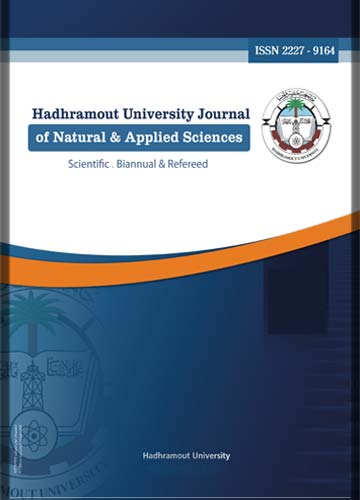Assessment Of Heavy Metal Pollution in the Seawater Of Hadhramout Coastal Area, Yemen
Keywords:
Seawater, Trace metals, seasonal, Hadhramout Governorate coastal areaAbstract
Hadhramout is considered as the industrial and commercial center for fishing in Yemen. Accordingly, Yemen food security depends highly on maritime products of Hadhramout. Consequently, any severe contamination caused by industrial activities would have direct or indirect negative impact on the sea life and marine environment. Seawater samples were collected from Hadhramout Governorate coastal area Yemen. Five sampling locations were selected to conduct the present study. The samples were taken on a seasonal basis from Augusts of 2013 until May 2014. Twenty seawater samples were collected from the five areas (Ras sharma, Burum, AL-Mukalla, AL-Sheher and Arryidah) at Hadhramout coastal area. Trace metals were measured to assess the status of contamination in the study area. Concentrations of Ni, Co, Mn, Cd, Fe, Cu, Zn and Pb in seawater were in the range of 0.8 to 1.9 mg/L, 0.5 to 1.2mg/L, 0.10 to 0.34mg/L, 0.1 to 0.2mg/L, 0.6 to 2.1mg/L, 0.3 to 0.8mg/L, 0.03mg/L to 0.48mg/L, 0.5 to 1.9mg/L, respectively. In this survey, high concentrations of parameters were recorded in the seawater of Burum area, AL-Mukalla area, AL-Shaher and Arryidah area, comparing with EPA. The results of the present study revealed that the different physicochemical parameters of water at the investigated locations the concentrations of Cu, Zn and Mn in water were below the permissible levels according to the EPA while Ni, Co, Cd, Fe and Pb were higher than the permissible level.




